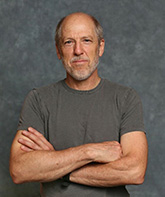Thought Leader Profile
John Payne
Ecologist, Blue Dot Research
John Payne is a research scientist whose nonlinear path through life has taken him for long periods into wilderness areas in Africa, Latin America, and Asia. With technical core competencies in data science, including machine learning, population modeling, spatial data analysis, remote animal telemetry, surveys, and monitoring, John has explored jobs as varied as being a commodities broker for a hedge fund and working with Bushman people in the Kalahari. From these experiences, he learned the incredible beauty and variety of nature; the tragedy of seeing unsustainable human population growth encroach on wilderness; a physical understanding of how people who are dependent on natural resources scrape out a living; the daunting complexity of politics and finance; and the bewildering layers of psychological insecurity, violence, obstruction, and self-justification that make progress so difficult to achieve.
John is fascinated by social technology â the institutions, laws, customs, and culture that underly every civilization â and on the brand-new, unprecedented potential of AI for influencing the direction of civilization.John has an MS in tropical ecology from the University of Florida and a PhD in zoology from the University of Washington. He has worked for the Wildlife Conservation Society, NOAA, the Census of Marine Life, and other groups, and as an independent consultant.John's curiosity about wildlife and nature conservation was sparked by his childhood in a remote Patagonian field camp, where his parents studied whales. Later, he spent four years in Africa, living with Bushmen (Ju/wa) people in the Namibian Kalahari Desert and surveying nocturnal wildlife deep in the rainforest of Cameroon. He served as Asia Program officer for the Wildlife Conservation Society (WCS) - which took him to Laos, Papua New Guinea, and eastern Russia - and spent two years in Mongolia providing scientific guidance on a project to monitor the progress of a large copper and gold mine toward achieving a net-positive impact on biodiversity. His team used satellite telemetry and a vast aerial survey of the Mongolian Gobi Desert to track wildlife, estimate abundance, and model ecological and human factors impacting animals.
As the senior scientist for the Pacific Ocean Shelf Tracking program, John helped lead the deployment of an array of acoustic receivers that spanned the US West Coast for long-distance tracking of marine species; and he was a member of the team of scientists who founded the US national Animal Telemetry Network. He developed fisheries stock assessment and ecosystem and extinction risk models at the University of Washington and NOAA and ran an acoustic telemetry project to assess the impact of a proposed wave-energy installation in Oregon. Recently, he served as the director of science for the Sea Shepherd Conservation Society, designing shipboard science programs focused on combating illegal fishing.
John's current projects include developing a cloud-based AI workflow for analyzing large volumes of aerial survey images, with the goal of creating an inexpensive, simple, and robust system for use by wildlife departments in Africa.
Speaker at FiRe 2023 and 2025
|
Share this: |

